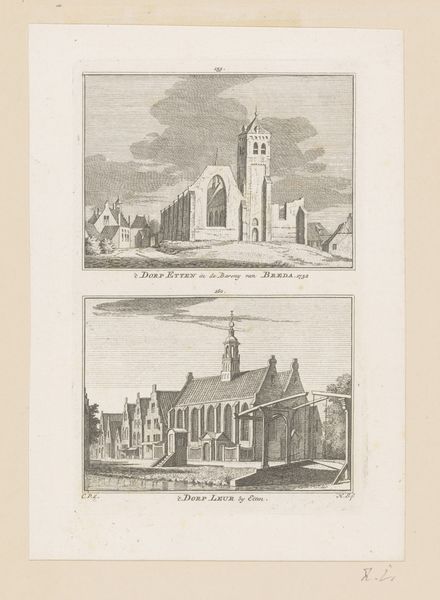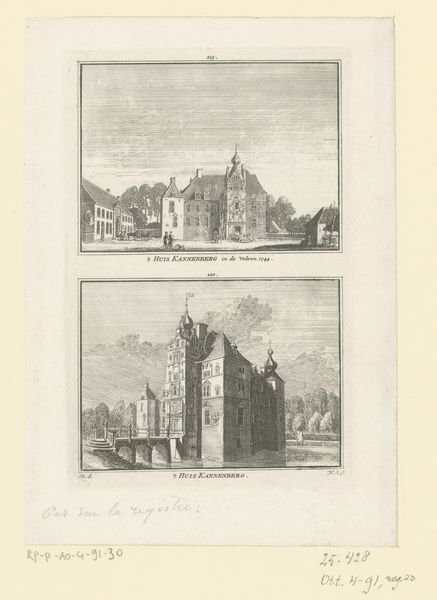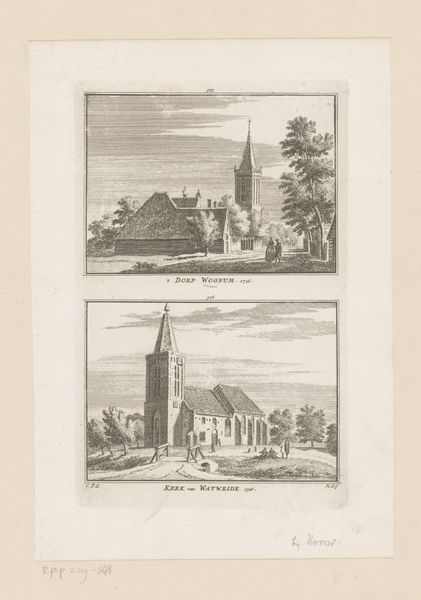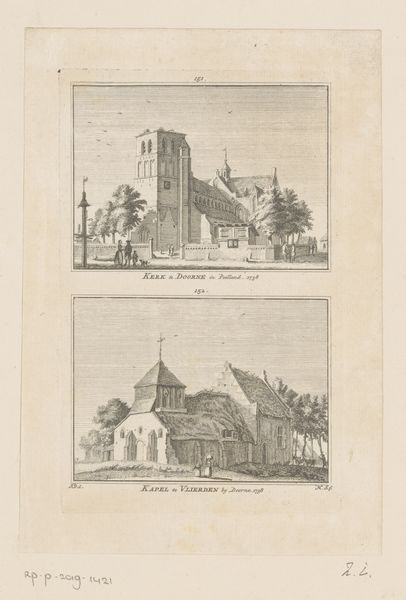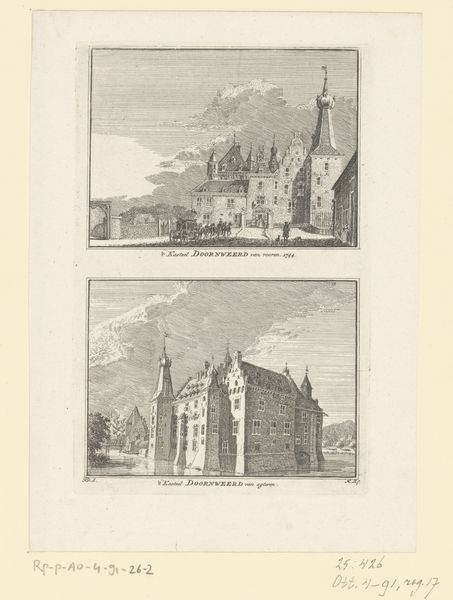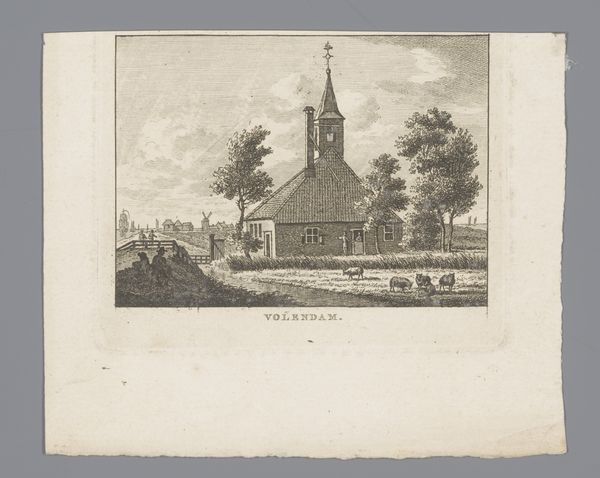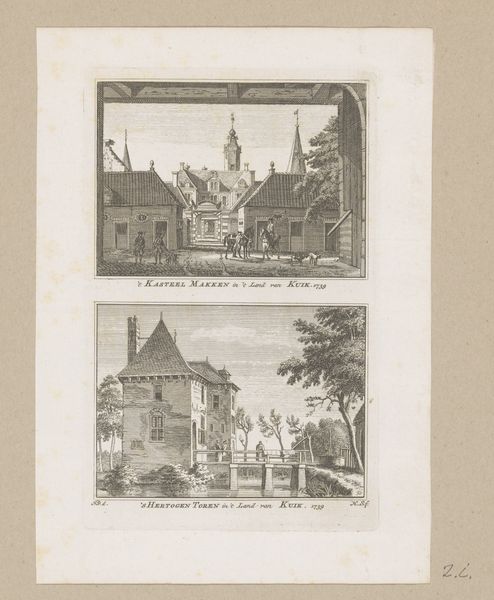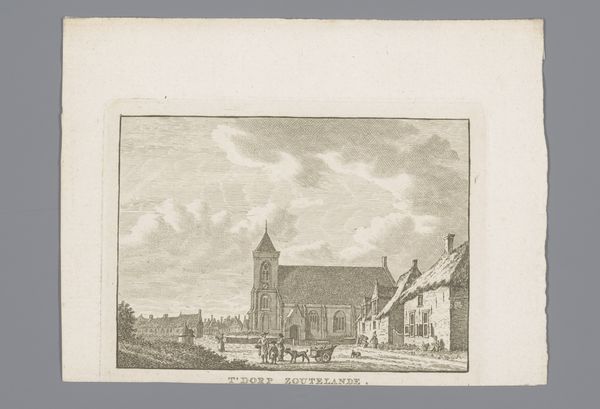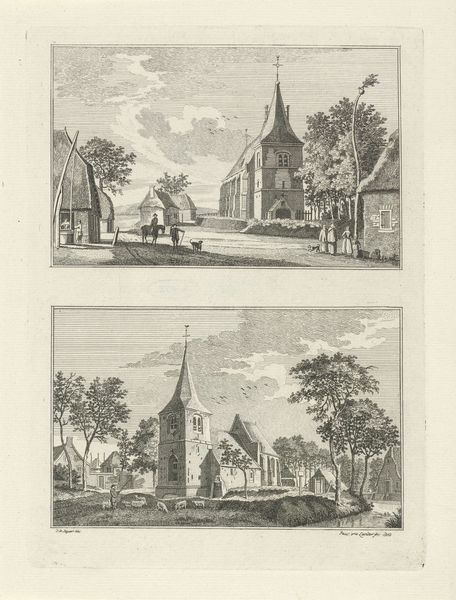
drawing, print, etching, engraving
#
drawing
#
dutch-golden-age
# print
#
etching
#
cityscape
#
engraving
Dimensions: height 176 mm, width 112 mm
Copyright: Rijks Museum: Open Domain
Curator: Here we have Jan Caspar Philips' "Gezicht op de Sint-Lievensmonstertoren te Zierikzee, 1743," an etching and engraving that invites close observation. Editor: It's somber, almost stark. The spire dominates everything, yet there’s an intriguing softness to the buildings around it. What do you make of the textures? Curator: Note the meticulousness. Philips has structured this composition masterfully, contrasting the grand, complex structure of the tower with the simplified forms of the adjacent buildings. Observe how he uses line and shadow to articulate volume and space. The lines aren't merely descriptive; they're constitutive of the visual experience itself. Editor: And within the context of Dutch Golden Age art, it feels like more than just a cityscape. These images of towers were incredibly important symbols for the growing merchant class, especially within cities like Zierikzee, whose economy hinged on trade. Curator: Indeed. And the light seems to caress the surfaces, revealing a sensitivity that transcends mere topography. He plays with atmospheric perspective, allowing the tower to dissolve subtly into the sky, creating a feeling of infinite depth despite the constraints of the medium. The symmetry is compelling. Editor: It speaks to the public role of such architectural marvels and their profound impact on Dutch identity at this moment in time. What strikes me is how, in the pursuit of representing civic pride, the everyday human presence is somewhat muted, relegated to mere accents in the grand design. Curator: Precisely! Consider how our gaze is consistently drawn upward. Philips constructs a hierarchy. The viewer is made to feel small, insignificant against the imposing presence of the church—a strategic positioning by both the artist and the patrons of such images. Editor: So we are really grappling with the layers of symbolism and ambition embedded within it all, which might tell us more about the commissioners of art than perhaps the artist. Curator: I am reminded, though, by the delicate use of light and form of what can be evoked through technical execution, leaving us both grounded and subtly lifted beyond. Editor: And I see a reminder of the profound intersection of societal ambition and the quieter everyday. A frozen moment that now triggers historical musings, indeed.
Comments
No comments
Be the first to comment and join the conversation on the ultimate creative platform.
